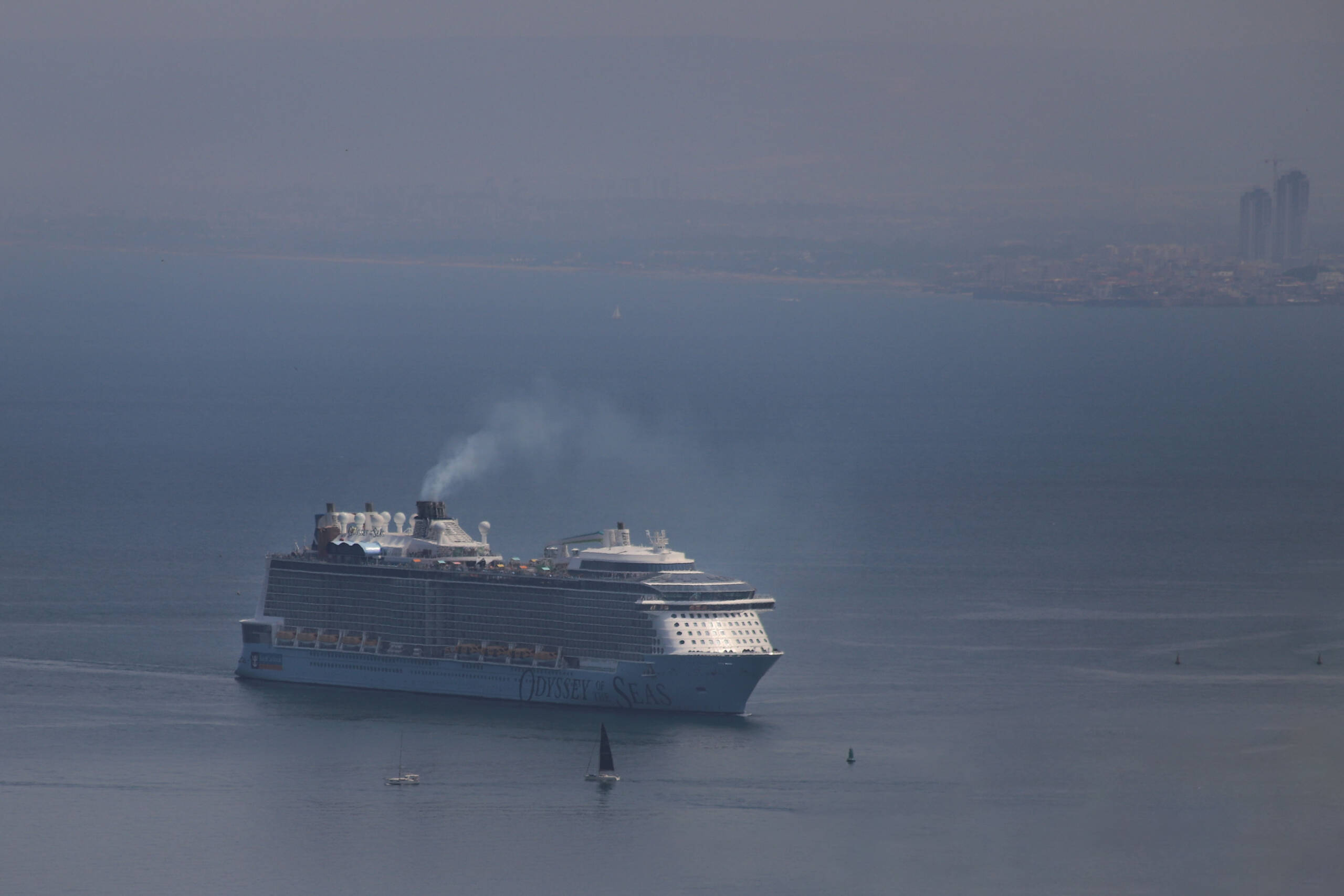In this striking photograph, the massive cruise ship Odyssey of the Seas sails through calm waters, its imposing presence a symbol of modern leisure and luxury travel. The ship’s towering structure dominates the serene seascape, with multiple decks and a plethora of amenities visible even from a distance. However, beneath the allure of this floating city lies a significant environmental concern that warrants closer examination.

A visible plume of smoke rises from the ship’s smokestack, starkly contrasting with the clear blue sky and pristine water below. This smoke is a potent reminder of the cruise industry’s substantial contribution to air pollution. The exhaust emitted from cruise ships contains a mix of harmful pollutants, including sulfur oxides (SOx), nitrogen oxides (NOx), carbon dioxide (CO2), and particulate matter. These pollutants contribute to acid rain, respiratory problems in humans, and the overall degradation of air quality in coastal and port cities frequented by these vessels.
Moreover, the cruise industry’s environmental impact extends beyond air pollution. The vast amounts of fuel burned by these ships release significant greenhouse gases, exacerbating global warming and climate change. The Odyssey of the Seas, like many other cruise ships, operates on heavy fuel oil, one of the dirtiest forms of fossil fuel. The sheer scale of consumption by these floating resorts results in a carbon footprint that rivals some of the most polluting industries on land.
The impact on marine environments is equally concerning. Cruise ships generate large quantities of waste, including sewage, gray water, hazardous waste, and solid waste. While some modern ships are equipped with advanced waste treatment systems, incidents of illegal dumping and accidental spills still occur, leading to severe consequences for marine ecosystems. The introduction of invasive species through ballast water discharge is another significant issue, disrupting local biodiversity and marine life.
Additionally, the noise pollution generated by cruise ships can be devastating for marine animals, particularly cetaceans such as whales and dolphins that rely on sound for navigation and communication. The constant hum of engines and propellers disrupts their natural behavior, leading to increased stress and even physical harm.
Efforts are being made to mitigate these impacts, including stricter regulations on emissions, the adoption of cleaner fuels, and the development of more efficient waste management systems. However, the cruise industry’s rapid growth and the continued demand for larger, more luxurious ships present ongoing challenges.
This image of the Odyssey of the Seas serves as a poignant reminder of the hidden costs of our pursuit of luxury and leisure. As travelers, we must be mindful of the environmental footprint of our choices and advocate for more sustainable practices within the tourism industry. By supporting companies that prioritize environmental responsibility and pushing for stricter regulations, we can help ensure that our oceans and air remain clean for future generations to enjoy.
Leave a Reply